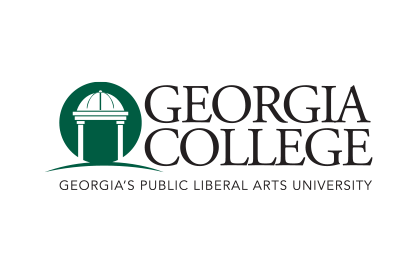Project Title
The Use of Photovoice Technique to Explore Veteran Identity: A Qualitative, Community-Based Participatory Action Research Model
Faculty Mentor(s) Name(s)
Stephanie Jett
Abstract
Researchers often attempt to define what it means to be a veteran, but it is rare for that question to be directly asked of Veterans. Traditionally, experimenters define the variables and ask the participants to provide responses without being included in the research process or reaping any direct benefit from participation. We argue it is vital that we elevate the voices of special populations, like Veterans, by employing more qualitative, community-based participatory action research (CbPAR) models where participants are empowered to use their voices to tell their stories and researchers serve to help communicate their stories to the community. In this presentation, we will present an argument for the importance of and increased need for use these methodologies in special populations in order to address the real concern of distrust in scientists and clinicians that are frequently encountered in these populations and the exploitative nature of scientific research frequently experienced by these groups. We will present these arguments through a study our lab will be conducting starting this semester and continuing into 2023 using a qualitative research technique called photovoice (e.g., Abraham et al., 2020, True et al., 2018), where Veterans will be asked to take pictures using digital cameras that answer the following prompt: What does being a Veteran mean to you? IRB approval has been obtained and data collection will start shortly. Participants will then be interviewed individually to complete semi-structured, photo-elicitation interviews where they will be asked several questions to help the researchers understand the symbolism of the images relating to the prompt for the participants. Transcripts of the interviews will be analyzed to uncover common themes and elements. External validity will be addressed through “member checking” (e.g., Koelsch, 2013), in which participants will review transcripts, discuss identified themes, and choose representative images to present in an art gallery for the community to allow for their stories to be told.
collection will start shortly. Participants will then be interviewed individually to complete semi- structured, photo-elicitation interviews where they will be asked several questions to help the researchers understand the symbolism of the images relating to the prompt for the participants. Transcripts of the interviews will be analyzed to uncover common themes and elements. External validity will be addressed through member checking (Koelsch, 2013), in which participants will review transcripts, discuss identified themes, and choose representative images to present in an art gallery for the community to allow for their stories to be told.
The Use of Photovoice Technique to Explore Veteran Identity: A Qualitative, Community-Based Participatory Action Research Model
Researchers often attempt to define what it means to be a veteran, but it is rare for that question to be directly asked of Veterans. Traditionally, experimenters define the variables and ask the participants to provide responses without being included in the research process or reaping any direct benefit from participation. We argue it is vital that we elevate the voices of special populations, like Veterans, by employing more qualitative, community-based participatory action research (CbPAR) models where participants are empowered to use their voices to tell their stories and researchers serve to help communicate their stories to the community. In this presentation, we will present an argument for the importance of and increased need for use these methodologies in special populations in order to address the real concern of distrust in scientists and clinicians that are frequently encountered in these populations and the exploitative nature of scientific research frequently experienced by these groups. We will present these arguments through a study our lab will be conducting starting this semester and continuing into 2023 using a qualitative research technique called photovoice (e.g., Abraham et al., 2020, True et al., 2018), where Veterans will be asked to take pictures using digital cameras that answer the following prompt: What does being a Veteran mean to you? IRB approval has been obtained and data collection will start shortly. Participants will then be interviewed individually to complete semi-structured, photo-elicitation interviews where they will be asked several questions to help the researchers understand the symbolism of the images relating to the prompt for the participants. Transcripts of the interviews will be analyzed to uncover common themes and elements. External validity will be addressed through “member checking” (e.g., Koelsch, 2013), in which participants will review transcripts, discuss identified themes, and choose representative images to present in an art gallery for the community to allow for their stories to be told.
collection will start shortly. Participants will then be interviewed individually to complete semi- structured, photo-elicitation interviews where they will be asked several questions to help the researchers understand the symbolism of the images relating to the prompt for the participants. Transcripts of the interviews will be analyzed to uncover common themes and elements. External validity will be addressed through member checking (Koelsch, 2013), in which participants will review transcripts, discuss identified themes, and choose representative images to present in an art gallery for the community to allow for their stories to be told.

